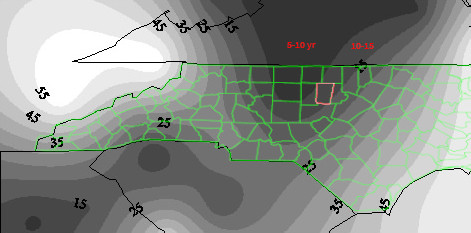1–2 minute read
Rapid swings in temperature and precipitation are normal for Orange County but create stressful conditions for plants. In addition to our routinely erratic weather, unusually severe events like a 100-year drought, a 100-year ice storm, and record summer heat have occurred recently. Resilient plants, careful siting, and good soil preparation are critical for long-term success.
Temperature
Our average annual minimum temperature is 10–15° (USDA hardiness zone 8a on the 2024 map), a full zone warmer than the 1990 map.
It is best to wait until 2 weeks after Apr 10 to plant tender transplants.
Plant suitability
Climate numbers provide a limited picture of whether a particular plant is adapted to our area. Plant Hardiness Zone Maps and Wikipedia discuss the shortcomings of traditional climate data in greater detail. Ornamentals provides online lists of locally-adapted plants and has a detailed discussion of factors that determine adaptation. We also have handouts on woody plants, perennials, and annuals that are adapted for our area. Adaption depends on all of the factors below:
- winter hardiness
- tolerance to heat, drought, humidity & tree root competition
- disease resistance
- sunlight & daylength requirements
- dormancy/chilling requirements
- soil preferences
Unique climate features
It is natural to think of the Triangle as a single climate region, but the topography of North Carolina creates distinct weather patterns that are not always shared between adjacent counties. Ice storms are a good example — Orange County lies near the center of an ice storm alley that affects NC unevenly. Severely damaging ice storms (more than ¾″ freezing rain) like the ones in 2002 and 2014 occur approximately every 10 years in Orange County, but only every 15 years in Durham County.
 State Climate Office of NC A Winter Weather Climatology for the Southeastern United States
State Climate Office of NC A Winter Weather Climatology for the Southeastern United States
